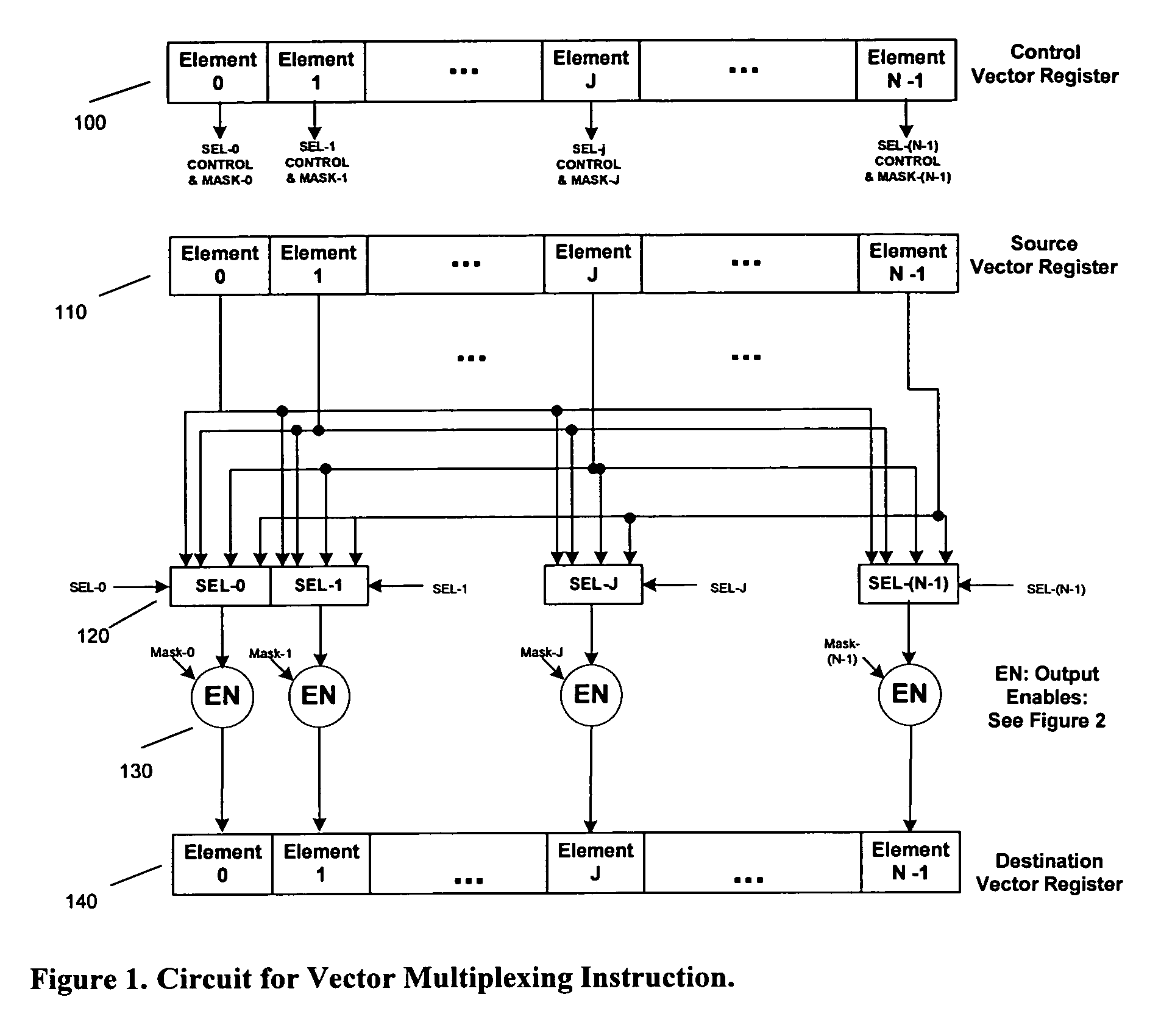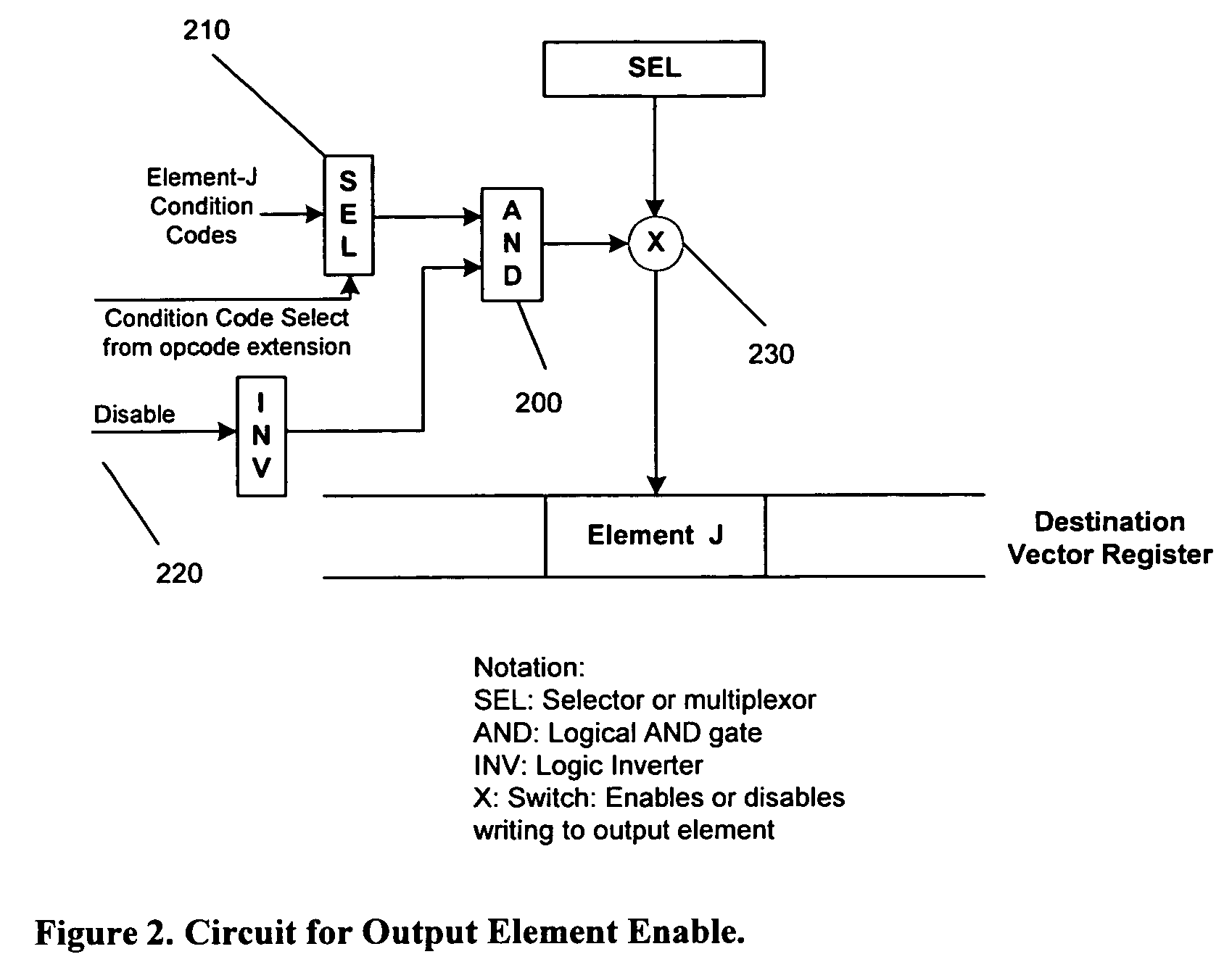Fast and flexible scan conversion and matrix transpose in a SIMD processor
a simd processor and scan conversion technology, applied in the field of processing chips, can solve the problems of lack of flexibility to support new compression algorithms, lack of performance needed in software approaches to implement compression and decompression algorithms, etc., and achieve the effects of fast implementation, efficient and flexible, and fast implementation
- Summary
- Abstract
- Description
- Claims
- Application Information
AI Technical Summary
Benefits of technology
Problems solved by technology
Method used
Image
Examples
embodiment
PREFERRED EMBODIMENT
[0041]The preferred embodiment uses a vector array processor as tightly coupled to a RISC processor, whereby one SIMD and one RISC instruction is executed every clock cycle as a dual-issue combined processor. The vector / array SIMD processor has a vector / array register file, which is loaded or stored using RISC processor instructions. There is no flow control in the SIMD processor, and the RISC processor handles all program flow control. The present invention could be easily scaled for different number of vector elements, but let us assume 32 elements for the preferred embodiment, where each element is 16-bits wide. Thus, the vector registers and the data memory to load them are 512 bits wide. VR1 to VR32 are the vector registers that may contain vector or 2-D array values.
[0042]Scan conversion of two 4×4 blocks used in H.264 could be implemented by a single vector instruction. Assuming VR3 contains the mapping vector, and VR2 contains the two 4×4 blocks to be reo...
PUM
 Login to View More
Login to View More Abstract
Description
Claims
Application Information
 Login to View More
Login to View More - R&D
- Intellectual Property
- Life Sciences
- Materials
- Tech Scout
- Unparalleled Data Quality
- Higher Quality Content
- 60% Fewer Hallucinations
Browse by: Latest US Patents, China's latest patents, Technical Efficacy Thesaurus, Application Domain, Technology Topic, Popular Technical Reports.
© 2025 PatSnap. All rights reserved.Legal|Privacy policy|Modern Slavery Act Transparency Statement|Sitemap|About US| Contact US: help@patsnap.com



